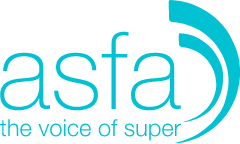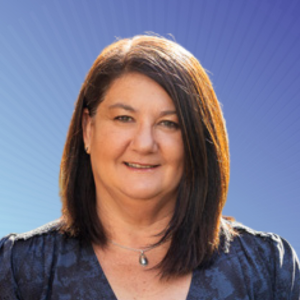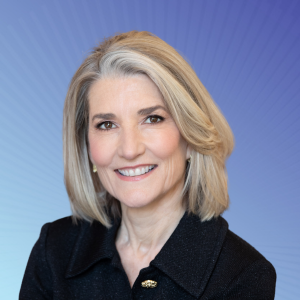Despite the notoriously impenetrable language used within financial services, there are certain ideas and basic concepts that have managed to take root in the general population.
Obvious examples include the benefits of a consistent savings strategy, as well as the idea of not selling an asset for less than its purchase price. While these principles certainly aren’t universally upheld, recent HILDA data suggests that at least a slim majority (55 per cent) of Australian adults are sufficiently financially literate to apply these ideas in their day-to-day lives.
However as research from Iress and Griffith University reveals, that can all change under external pressure. When COVID-19 hit Australian shores in 2020, it precipitated a steep (36 per cent) drop in the ASX 200, igniting fears that the economy was on the brink of collapse. Those fears, combined with arguably more pressing health concerns, created a crisis environment where even the most astute and clear-headed were vulnerable to rash decision making.
The wrong switch
The research demonstrates this via analysis of super fund member behaviour (more specifically, 42,000 fund and investment option switching decisions) during the period spanning 1 January 2020 to 31 March 2021. It found that “bad switches”—where the account balance impact of making the switch was worse than if no switch had been made at all—grew significantly over the course of the pandemic, from 33.5 per cent to approximately half of all switching decisions.
These “bad switches”, the report argues, were particularly prevalent among groups “who can least afford it.” These groups include pre-retirees (69.2 per cent of whom made bad switches), later career members between 51 and 60 years old (59.5 per cent bad switches) and women (52.4 per cent bad switches), whom the report notes “typically have lower balances to begin with”.
Reinforcing the negative correlation between intense external pressure and sound financial decision-making, over 70 per cent of switches made between March and April 2020 produced a “bad” outcome. That month was not only a period of significant market downturn but also marked the introduction of closed borders, social distancing rules, mandatory quarantine, and the suspension of “non-essential” services. In other words, an acutely stressful time for many—if not all—Australians.
While the research was obviously unable to assess the individual financial literacy of every super fund member who made a switch during this period, the sheer volume of “bad switches” indicates that literacy alone does not preclude bad decisions when the outlook (economically, socially, medically) is grim. And even though, two years on, market turmoil during COVID-19 can be observed as part of a typical market crisis cycle, that certainly wasn’t the general tenor in the media or public at the time.
Too much information
Of course, the other reason there were so many “bad switches” during the most acute periods of the COVID-19 crisis was because those switches are now very easy to make. As super funds have directed their efforts towards increasing member engagement and giving members greater control over how their retirement savings are invested, the barriers for a person looking to change their super investment options have dropped dramatically.
This is a good thing in many respects – wisdom dictates that an engaged super member is more likely to make voluntary contributions and therefore increase the size of their retirement nest egg. And as per the 2019 Super Insights report from KPMG, super funds are more likely to both acquire and retain members if they deliver services “with integrity, which are personalised and meet [members’ expectations].”
But what happens when those members, increasingly inclined towards availing themselves of the control and flexibility their super fund now offers them, are also connected to a limitless, 24/7 reservoir of social media updates, news stories and other commentary about market movements, the Australian economy, and the world at large?
Well, Iress and Griffith’s research suggests that you get exactly the kind of switching behaviour observed during COVID-19.
As the report explains, “[increases] in switching behaviour [are] posited to be directly associated with the ease of online switching access now available to the average super member, combined with heightened consumer awareness of fluctuations in financial markets, fuelled by substantive media coverage through the pandemic.”
Striking a balance
So the question is, what should super funds be doing about this issue ahead of the next inevitable market crisis? If the answer isn’t to completely reverse course and rebuild the barricades between members and their super balances—likely not the most prudent strategy in an increasingly competitive super marketplace—what is the right approach?
“While better superannuation switching access and financial control is a good thing,” the report explains, “that very access could also be putting the retirement dreams of those with lower levels of financial literacy at risk. It’s imperative that superannuation trustees and policymakers consider strategies to support members making more effective decisions about their superannuation.”
Those strategies include building programs aimed at increasing members’ overall financial literacy, using technology to positively “intervene” during member decision-making and dramatically increasing the accessibility of quality financial advice. In the context of the findings above, measures aimed at “protecting members from themselves” appear less like heavy-handed overreach and more like fiduciary duty.
Of course, striking the delicate balance between engaging and protecting members isn’t an easy task. It requires investments in technology, member outreach and deep analysis of member behaviour. Achieving this, especially during a time when funds are under increasing regulatory and competitive pressure, may necessitate a restructuring of existing operating models and processes.
There are major questions to be answered around what gets done where and by whom, what can be outsourced and automated, and how initiatives like those recommended in the research can be applied across the fund in a standardised way. Creating a sustainable operating model that can both accommodate the ongoing downward pressure on member costs as well as withstand any future crises like the one triggered by COVID-19 will be essential for super funds’ survivability.
More importantly though, it puts funds in a better position to achieve their stated purpose: increase the proportion of Australians able to achieve the goal of a self-funded retirement. And as COVID-19 has revealed, Australians may need more guidance to reach that goal than previously understood.
To access the full research report visit: info.iress.com/thewrongendoftheswitch









